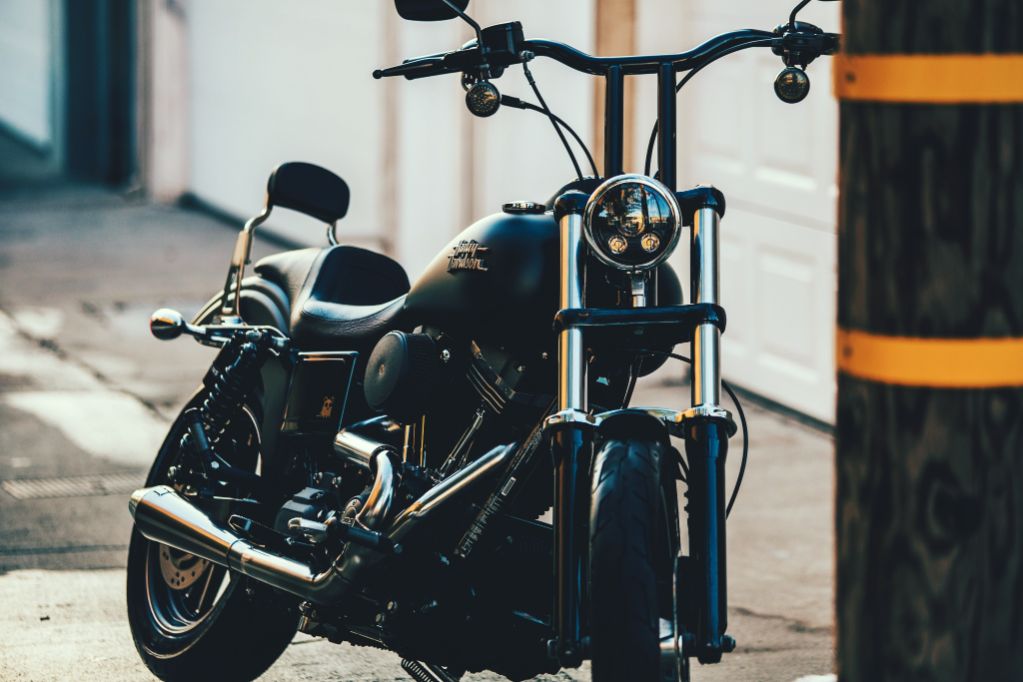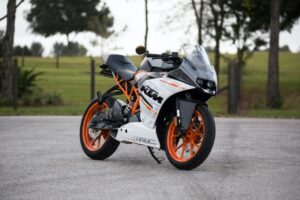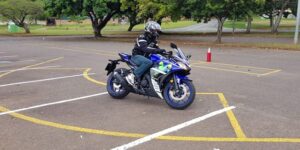It can occasionally be difficult and downright frustrating to try to understand the electrical system on a motorcycle. Motorcycles must produce electricity in some way; otherwise, they couldn’t operate their headlights, blinkers, or even start.
You’ll hear terms such as “alternator,” “stator,” “rectifier,” “magneto,” etc., but what does it all mean, and how does it apply to motorcycles? The word “alternator” is probably the most widely known term and many wonder if a motorcycle has one.
Do motorbikes have alternators, then? Although some motorcycles use generators in place of alternators, most motorcycles do. Similar to car alternators, they are responsible for converting mechanical energy into electrical energy. In order to learn more about motorcycle alternators, please read this article.
What Is A Motorcycle Alternator?
An alternator can be thought of as a machine that transforms mechanical energy into electrical energy. We are all familiar with the phenomenon of induced current, which occurs when a conductor (like a copper wire or coil) is moved toward a permanent magnet or a permanent magnet is moved toward a conductor.
Faraday’s law explains this. The alternator utilizes this concept, just like a lot of other electrical devices. It produces alternating current (AC), which is denoted by the word alternator.
An automobile’s (or a motorcycle’s) internal combustion engine generates mechanical energy, but it also requires electrical energy to move the vehicle. The automobile’s alternator uses the engine’s mechanical energy and transforms it into electrical energy.
Do Motorcycles Have Alternators?
If your motorcycle is a modern model, the answer is yes. If you own an older model motorcycle, it’s possible that it doesn’t have an alternator and instead uses a low-power system (a DC generator or magneto). The topic of motorcycles with alternators is covered in this article.
On the other hand, if you start looking for an alternator on your motorcycle, you might not find it right away. The motorcycle alternator is typically integrated into the engine assembly rather than being a separate unit, which explains why.
The most commonly used alternator in a motorcycle is known by the name “stator” and it has three parts: “the rotor, the stator, and a rectifier & regulator unit”. Although these three parts are three separate parts and can be serviced separately, they work in unison to complete the task at hand.
On a very powerful touring motorcycle, as an exception, you might find an externally mounted, self-contained alternator similar to a car. This alternator has every component built right into it, and the crankshaft drives it either through a gear or a short chain.
This kind of alternator is uncommon but extremely powerful. They are mounted externally and open to the air because the alternator heats them up.
How Do Motorcycle Alternators Function?
In order to generate an electric current, alternators use electromagnetic induction. When a conductor and a magnetic field are moving relative to one another, this process happens. An electric current is produced in the conductor as it passes through the magnetic field.
These electrical devices or batteries can then be powered by this current of electricity. The engine itself can also be powered by the electricity produced.
Where Is The Alternator Located On A Motorcycle?
On most motorcycles, the alternator is situated close to the rear wheel on the right side of the vehicle. It is frequently fixed to the motorcycle’s engine or to the frame of the vehicle.
Your owner’s manual can help you if you’re having trouble locating the alternator on your motorcycle. This will contain every piece of knowledge you require regarding the location of each component on your particular motorcycle.
Are Motorcycle Alternators Different Than Those On Other Vehicles?
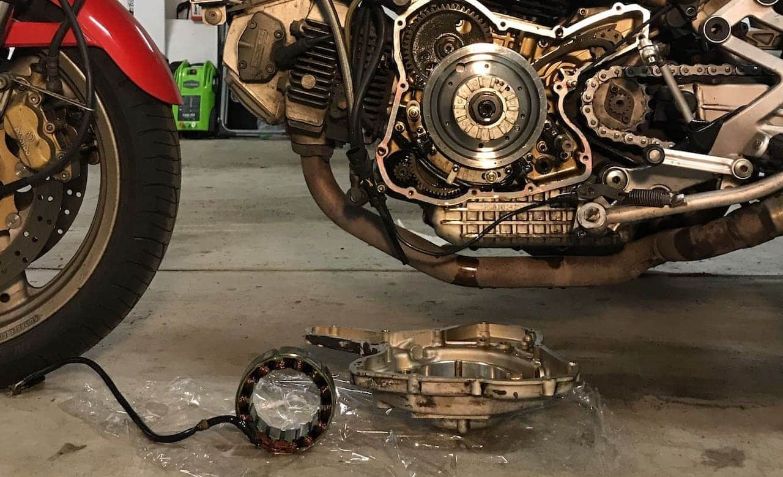
You might be curious to know how motorcycle alternators differ from those found in other types of vehicles. Yes and no, is the response. The purpose of an alternator is to produce electricity to power a vehicle’s electrical systems. Alternators on motorcycles may differ slightly from those on cars or trucks.
Alternators on motorcycles and those in other vehicles typically differ in size. Alternators for motorcycles are frequently significantly smaller than those for cars and trucks.
Motorcycles typically have smaller engines than other types of vehicles, so they don’t need as much power to operate. The use of smaller and lighter components is another way that many motorcycle manufacturers attempt to reduce weight.
There are a few minor differences between motorcycle alternators and those on other vehicles, but overall they perform the same function.
Are The Motorcycle’s Stator And Alternator The Same Thing?
A stator and rotor combined inside one housing is an alternator. The motorcycle flywheel will serve as the rotor and stator, respectively, in order to generate current.
All of the components needed to produce electricity are frequently incorporated into a single casing by an alternator.
- Stator
- Rotor
- Regulator
- Rectifier
A stator can’t produce dependable and secure current on its own because it’s only one component of the system. Stators don’t produce as much electricity as an independent, more powerful alternator unit. However, compared to automobiles, most motorcycles require less electricity. Stators are thus a good option for bicycles.
A much more compact arrangement involves connecting a stator to the crankshaft inside an engine casing with the aid of a flywheel. Oil is also bathing the stator inside the engine. Because of this, it is impossible to combine all the various electrical generating components into a single unit.
Instead the remaining part of the system; the rectifier and regulator will be externally linked. They will be involved in the connection between the stator and the battery somewhere.
What Takes Place If The Alternator/Atator Fails?
Riders should be aware of the symptoms as there are some telltale signs that the stator in their motorcycle is failing. If you own a motorcycle long enough, you’ll probably experience stator problems at some point or another.
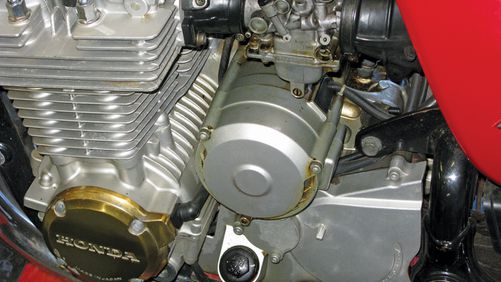
The first and most obvious sign the alternator system on your motorcycle isn’t functioning properly is that your battery doesn’t really seem to be holding a charge. Your motorcycle might seem a little sluggish, and the lights might appear to dim more quickly. You might even reach a point where riding your motorcycle results in it slowly dying.
Because the battery is the only source of power used by the motorcycle, this is the case. A motorcycle’s battery can only store so much current; therefore, it cannot run continuously.
Your motorcycle may have trouble reaching or maintaining high RPMs. A revved engine needs more power, and if the stator isn’t functioning, all of that power is coming from the battery, which might not have enough current to supply at high RPMs. A bad stator might be to blame if you’ve noticed that your motorcycle engine dies when you try to accelerate or rev it quickly.
Along with these two symptoms, you may also notice a “whirring” sound coming from one side of the engine. It will sound like you’re manually turning a flashlight. This indicates that the stator’s magnetism isn’t functioning.
Can A Bad Alternator Damage The Motorcycle?
Motorcycle damage may result from an improperly functioning alternator. The alternator is in charge of running the electrical system and recharging the battery. The battery will eventually die if the alternator is not functioning properly.
Additionally, poor engine performance may result from inadequate power to the electrical system.
As a result, if you notice that your motorcycle’s battery is losing charge or that the engine is running rough, it may be an indication that the alternator is malfunctioning. Make sure to get your motorcycle checked out as soon as you can by qualified mechanic.
What Are The Signs Of A Bad Alternator?
The alternator in your motorcycle may be failing if it exhibits a few symptoms. Headlight dimming is one of the most typical symptoms.
The battery will gradually start to lose power if the alternator isn’t charging it properly, which will result in dimmer headlights over time.
Engine problems are a different sign to be on the lookout for. Engine performance can suffer in a variety of ways if the electrical system isn’t receiving enough power. As a result, if you notice your motorcycle stalling or running erratically, it may be due to an alternator issue.
Make sure to take your motorcycle to a qualified mechanic as soon as you can if you experience any of these symptoms or any others that seem out of the ordinary. They’ll be able to identify the issue and inform you of the need for an alternator replacement.
The Best Way To Test An Alternator
There are a few ways to test your motorcycle alternator if you suspect it may be failing. One method is to test the alternator’s voltage output using a voltmeter.
Make sure the motorcycle is off before you begin, and unplug the battery cables. Then connect the voltmeter’s positive lead to the battery’s positive terminal and its negative lead to the output terminal of the alternator.
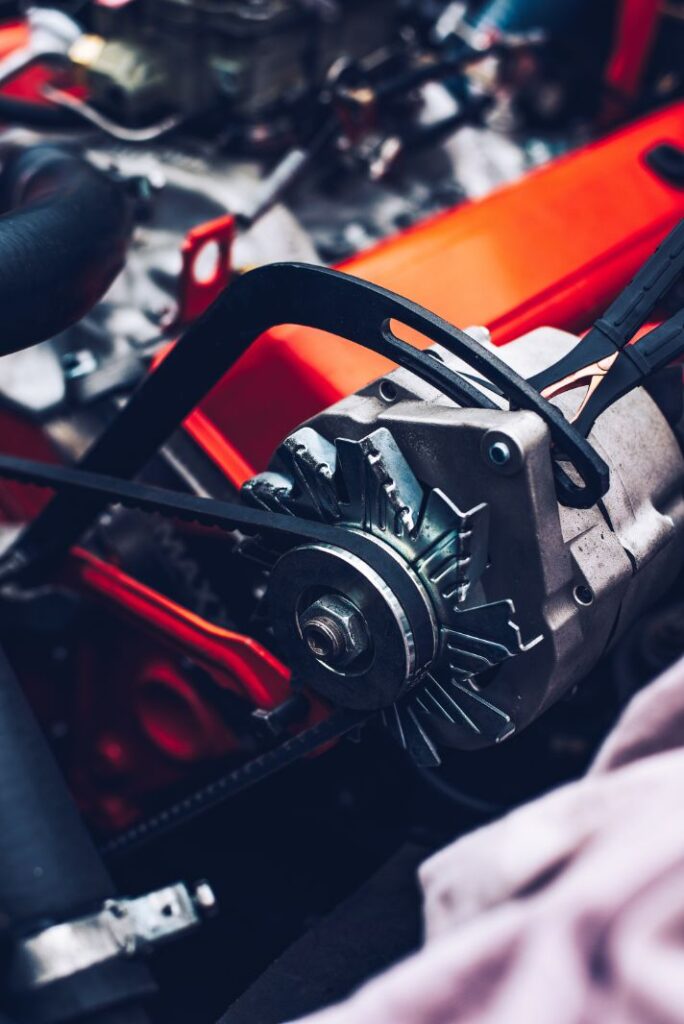
If the alternator is operating properly, the voltmeter should show around 14 volts. If it reads less than that, the alternator may not be charging properly.
By starting the motorcycle and listening for odd noises, you can test an alternator in another way. It frequently makes a whining or grinding sound if the alternator is failing.
Make sure to take your motorcycle to a qualified mechanic as soon as you hear any strange noises coming from it so they can identify the issue.
FAQs
Motorcycle Alternators: How Long Do They Last?
Alternators for motorcycles have a lifespan of between 30,000 and 60,000 miles. The alternator may need to be changed more frequently, though, if your motorcycle is frequently used in stop-and-go traffic or for brief excursions.
Moreover, the alternator might not last as long if you frequently ride in dusty or slick conditions.
What Causes A Motorcycle Alternator To Fail?
An alternator in a motorcycle can malfunction for a number of reasons. Drive belt wear is one common reason for this. The alternator won’t function properly if the drive belt is worn out because it could slip or break.
A malfunctioning voltage regulator is another typical cause of alternator issues. The voltage output of the alternator must be controlled by the voltage regulator. If it malfunctions, the alternator might overcharge or undercharge the battery.
Last but not least, an alternator issue can result from a bad battery. The alternator may be stressed and fail early if the battery is old or has a bad cell.
What Would Happen If My Motorcycle’s Alternator Failed?
You are aware that your motorcycle’s battery has a finite amount of power to keep it running, and that it will run out of power if the alternator isn’t used to recharge it. So, if your alternator develops a problem, the battery cannot be charged. Your motorcycle’s battery keeps it running for as long as it can before the lights stop working, the engine becomes sluggish, and the motorcycle finally shuts off.
How Do You Maintain An Alternator?
You can take a few steps to maintain the alternator on your motorcycle. First, make sure the area around the alternator is clear of clutter and clean. This will make it more likely that the alternator will operate properly.
Additionally, it’s crucial to regularly inspect the belt that runs the alternator. Verify the condition and tightness of the belt. Replace it as soon as you can if it appears loose or damaged.
Finally, make sure to regularly test the alternator on your motorcycle. By doing this, you can identify any issues right away and keep them from worsening.
Many motorcycles require alternators to function. You can make sure that your motorcycle is always in good working order by being aware of where they are and how they operate.
Additionally, you can avoid major issues in the future by routinely inspecting and maintaining your alternator. Don’t put off learning about motorcycle alternators any longer; get out there and do it now!
Conclusion
An essential component of your motorcycle is the stator (alternator). It is very dependable and generally does not cause problems. The stator does, however, require routine maintenance, just like other components of your motorcycle. If you’re uncertain about how to replace an alternator or if you don’t feel confident doing it yourself, always take your motorcycle to a qualified mechanic.
